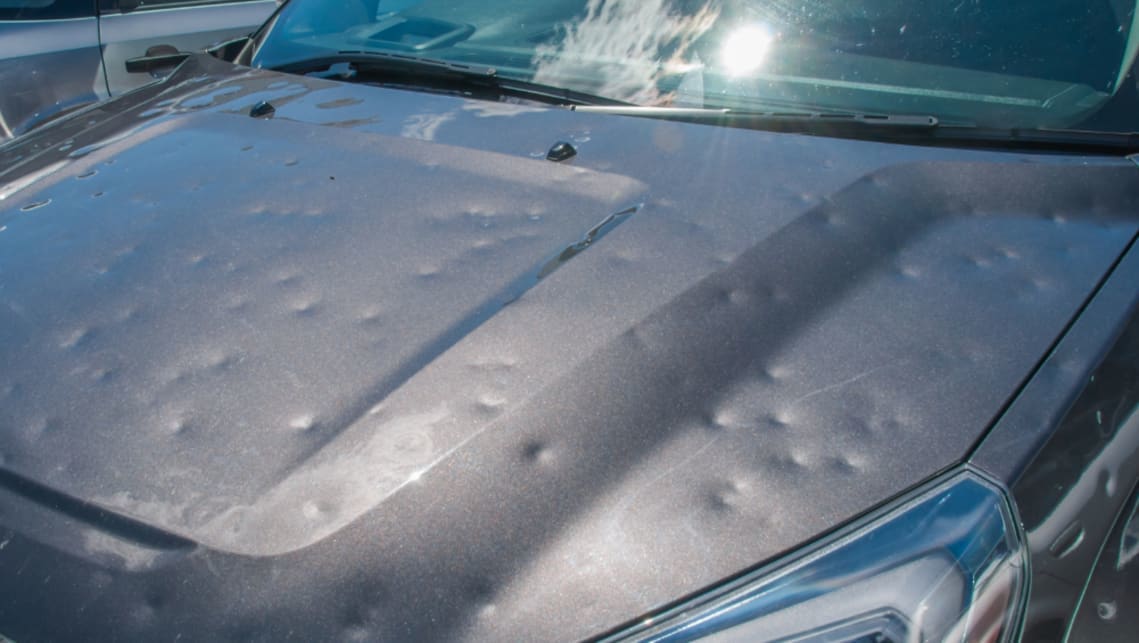Your cart is currently empty!

Why you should beware of buying a hail-damaged car
Recent massive hailstorms in NSW and the ACT have sent a rash of hail-damaged cars onto the used-car market.
Sometimes, these can represent bargain buys, with literally thousands of dollars slashed from the price-tag of an undamaged example, and other times, you might be buying more trouble than you bargained on.
An insured car will sometimes be written-off by the owner’s insurance company purely because the cost of hail repairs is more than the value of the car. It’s that simple; a basic mathematical equation.
When that happens, the otherwise perfectly useful car will usually be added to a government-administered list of vehicles that are deemed repairable (as opposed to those that have been damaged beyond the point of being repairable, called statutory write-offs).
Returning a statutory write-off to the road – even after superficial hail damage – can sometimes involve all sorts of paperwork and inspections.
The rules and regulations vary from state to state, so you need to check the nitty-gritty in your home state or territory before proceeding.
Sticking with insurance, an RACV Insurance spokesperson told us that you’ll probably find that buying a hail-damage car means declaring that damage and taking out an insurance policy – even an interim one – that acknowledges the existing hail damage.
He also said that some insurers would not offer cover to a car that had pre-existing damage.
Depending on the insurer, you might be offered only third-party, fire and theft cover rather than fully comprehensive insurance on a hail-damaged car.
You might also find that some financial institutions won’t lend money to buy a car that is carrying existing damage – hail damage included.
If the car is just something you leave at a railway station five days a week, you may elect not to repair it, but that could leave you with a car that is very difficult to sell when the time comes.
If you do want to repair the car, make sure you have a pretty accurate idea of the cost of repairs before you buy the car. Get it wrong and you might end up spending more than you would have buying a non-damaged car in the first place.
There are really three ways to repair hail damage, and which one you choose (and it will often be dependent on the severity of the damage) will have a huge outcome on the eventual cost.
You can replace whole panels and have them painted to match the rest of the car, but if the car has seen its share of sun over the years or is a metallic or pearlescent colour, the new paint will need to be blended into the existing paint, meaning it’s often more than just the new panels that need paintwork.
Even then, you might find that a few years down the track, it’s obvious which panels aren’t original to the car.
Traditional panel beating – where the dents are hammered out and a thin layer of filler is applied to regain the original shape of the car and then those panels painted – is also still a technique in use in repairing hail damage.
Done properly it’s fine, but take it to a bog merchant (a repairer who simply ladles filler into the dents without metal-working them out first) and you’ll have a car that looks fine at first but will develop cracks, crows-feet and other imperfections as it ages.
The third method is to use what’s called Paintless Dent Removal (PDR).
As the name suggests, a technician with a variety of levers, blades and `flippers’ can find a way behind the damaged panel and press out the damage without affecting the painted surface.
This is a real skill and it depends on the degree of damage.
PDR is usually charged for by the dent, so in the case of a car with hundreds of hail pock-marks, it might be cheaper to use conventional panel beating.
In each of these cases, the outcome will depend hugely on the skill of the person doing the work, so make sure you talk to people who can vouch for the quality of that business’ work.
by
Tags:
